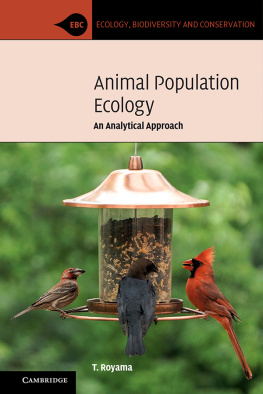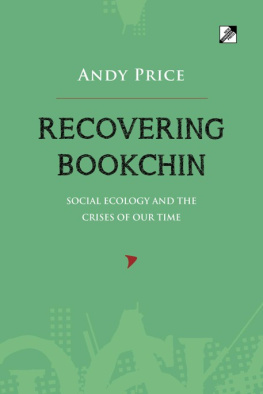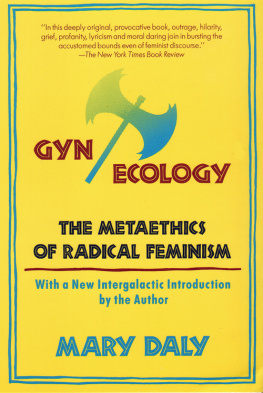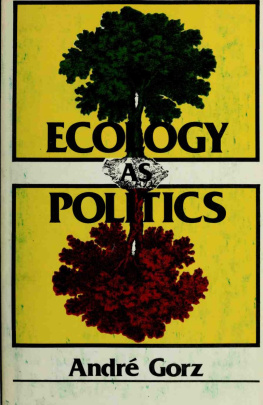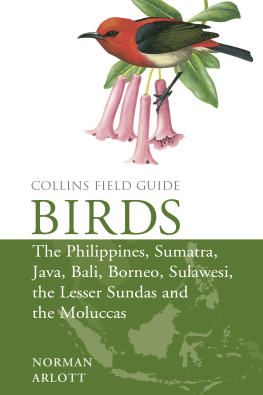Sengli J. Damanik - Ecology of Sumatra
Here you can read online Sengli J. Damanik - Ecology of Sumatra full text of the book (entire story) in english for free. Download pdf and epub, get meaning, cover and reviews about this ebook. year: 2012, publisher: Tuttle Pub., genre: Romance novel. Description of the work, (preface) as well as reviews are available. Best literature library LitArk.com created for fans of good reading and offers a wide selection of genres:
Romance novel
Science fiction
Adventure
Detective
Science
History
Home and family
Prose
Art
Politics
Computer
Non-fiction
Religion
Business
Children
Humor
Choose a favorite category and find really read worthwhile books. Enjoy immersion in the world of imagination, feel the emotions of the characters or learn something new for yourself, make an fascinating discovery.
- Book:Ecology of Sumatra
- Author:
- Publisher:Tuttle Pub.
- Genre:
- Year:2012
- Rating:4 / 5
- Favourites:Add to favourites
- Your mark:
- 80
- 1
- 2
- 3
- 4
- 5
Ecology of Sumatra: summary, description and annotation
We offer to read an annotation, description, summary or preface (depends on what the author of the book "Ecology of Sumatra" wrote himself). If you haven't found the necessary information about the book — write in the comments, we will try to find it.
Ecology of Sumatra — read online for free the complete book (whole text) full work
Below is the text of the book, divided by pages. System saving the place of the last page read, allows you to conveniently read the book "Ecology of Sumatra" online for free, without having to search again every time where you left off. Put a bookmark, and you can go to the page where you finished reading at any time.
Font size:
Interval:
Bookmark:
Bibliography
(Note: numbers following references are the catalogue numbers given in the library of the Centre for Resource and Environmental Studies, University of North Sumatra, Medan)
Abdulhadi, R., Kartawinata, K. and Sukardjo, S. (1981). Effects of mechanised logging in the lowland dipterocarp forest at Lempake. East Kalimantan. Malay. Forester 44: 407-418.
Abe, T. (1978). The role of termites in the breakdown of dead wood in the floor of Pasoh study area. Malay. Nat. J. 30: 391-404. (12.4.31)
Abe, T. (1979). Food and feeding habits of termites in Pasoh Forest Reserve , Jap. J. Ecol 29: 121-136.
Abe. T. and Matsumoto, T. (1978). Distribution of termites in Pasoh Forest Reserve. Malay. Nat. J. 30: 325-335. (12.4.32)
Abe, T. and Matsumoto, T. (1979). Studies on the distribution and ecological role of termites in a lowland rain forest of West Malaysia III. Distribution and abundance of termites at Pasoh Forest Reserve. Jap. J. Ecol. 29: 337-353.
Achmad, A.G. (1979). Menyadarkan masyarakat untuk keberhasilan dalam lingkungan hidup ditinjau dari sudut agama. In Lokakarya Membudayakan Kesadaran Lingkungan hidup di Masyarakat , pp. 168-178. Pusat Kajian Lingkungan Hidup, Universitas Sumatera Utara, Medan. (20.2.26)
Addicott, J.F. (1974). Predation and prey community structure: an experimental study of mosquito larvae on the protozoans of pitcher plants. Ecology 55: 475-492. (12.4.20)
Adisoemarto, S. (1980). Binatang Hama. Lembaga Biologi Nasional, Balai Pustaka. (11.1.4)
Adisoemarto, S. and Sastrapradja, S. (1977). Sumber Protein Hewani. Lembaga Biology National, Bogor. (9.2.2)
Afriastini, J. (1982). Kayu bawang. Suara Alam No. 15: 20-21. (12.1.95)
Ahmad, A. (1978). Klasifikasi rawa-rawa pesisir (coastal swamps) di Pasaman Barat. Terubuk 10: 30-36 (12.10.11)
Ahmad, I. (1980). Tinjauan umum tentang beberapa aspek ekologi dan lakukan tikus liar dari ladang kelapa sawit. Tesis Sarjana Muda, Universiti Kebangsaan Malaysia, Kuala Lumpur. (12.8.80)
Aksornkoae, S. (1981). Distribution, growth and survival of seedlings of mangrove forest in Thailand. BIOTROP Spec. Publ. 13: 23-27. (10.4.18)
Aldrich-Blake, F.P.G. (1980). Long-tailed macaques. In Malayan Forest Primates: Ten Year's Study in Tropical Rain Forest (ed. D.J. Olivers), pp. 147-165. Plenum, New York. (12.8.25)
Alexander, M. (1964). Biochemical ecology of soil micro-organisms. Ann. Rev. Microbiol. 18:217-252. (12.4.59)
Alfred, E.R. (1961). Singapore fresh-water fishes. Malay. Nat. J. 15: 1-19. (12.5.20)
Alfred, E.R. (1966). The fresh-water fishes of Singapore. Zool. Verh. Leiden 78: 1-68. (12.5.28)
Allaby, M. (1983). The greening of the Cornish Alps. New Scient. 98: 138-141. (10.1.2)
Allen, B. (1954/5). Some common ferns of the open country. Malay Nat. J. 8: 95-110, 133-151. (12.1.90)
Alrasjid, H. and Effendi, R. (1979 ).Pengaruh eksploitasi dengan traktor terhadap kerusakan tegakan sisa di kelompok hutan hujan tropis Pulau Pagai Selatan, Sumatera Barat. Laporan No. 293, Lembaga Penelitian Hutan, Bogor. (9.1.13)
Altieri, M.A., Martin, P.B and Lewis, W.J. (1983). A quest for ecologically based pest management systems. Env. Manag. 7: 80).
Altieri, M.A. Martin, P.B. and Lewis, W.J. (1983) A quest for ecologically based pest management sustems. Env. Manag. 7: 91-100. (11.1.16)
Anderson, J.A.R. (1959). Observations on the ecology of the peatswamp forests of Sarawak and Brunei. In Proc. Symp. Humid Tropics Vegetation, Tjiawi 1958 , pp. 141-148. UNESCO, Paris. (12.10.14)
Anderson, J.A.R. (1961). The Ecology and Forest Types of the Peat Swamp Forest of Sarawak and Brunei in Relation to Their Silviculture. Ph.D. thesis, Edinburgh University.
Anderson, J.A.R. (1963). The flora of the peat swamp forests of Sarawak and Brunei, including a catalogue of all recorded species of flowering plants, ferns, and fern allies. Gdns' Bull. S'pore 29: 131-228. (12.10.18)
Anderson, J.A.R. (1964). The structure and development of the peatswamps of Sarawak and Brunei. J. Trap. Geong. 18: 7-16. (12.10.12)
Anderson, J.A.R. (1965). Limestone habitat in Sarawak. In Proc. Symp. Ecol. Res. Humid Trop. Veg. , pp. 49-57. UNESCO, Paris. (12.10.69)
Anderson, J.A.R. (1976). Observations on the ecology of five peat swamps in Sumatra and Kalimantan. In Proc. ATA 106 Midterm Seminar, Peat and Podzolic Soils and Their Potential for Agriculture in Indonesia , pp. 45-55. Soil Research Institute, Bogor. (12.10.13)
Anderson, J.M. and Swift, M.J. (1983). Decomposition in tropical forests. In Tropical Rain Forest: Ecology and Management (ed. S.L. Sutton, T.C. Whitmore and A.C. Chad-wick), pp. 287-309. Blackwell, Oxford.
Anderson, J.M., Proctor, J. and Vallack, H.W. (1983). Ecological studies in four contrasting lowland rain forests in Gunung Mulu National Park, Sarawak III. Decomposition processes and nutrient losses from leaf litter. J. Ecol. 71: 505-527.
Andriesse, J.P. (1974). Tropical Lowland Peats in South-east Asia. Koninklijk Instituut voor de Tropen, Amsterdam. (23.4.12)
Anon. (1979a). Fisheries Statistics of Indonesia 1977. Direktorat Jenderal Perikanan, Jakarta.
Anon. (1979b). Jenis penyu laut di Indonesia. Suara Alam 5: 34-36. (12.6.34)
Anon. (1980a). Saving Siberut: A Conservation Masterplan. World Wildlife Fund, Bogor. (10.2.1)
Anon. (1980b). World Conservation Strategy: Living Resource Conservation for Sustainable Development. International Union for the Conservation of Nature and Natural Resources , Gland. (20.3.11)
Anon. (1981). Conclusions and recommendations from the BIOTROP symposium on forest regeneration in Southeast Asia. BIOTROP Spec. Publ. 13: 224-226. (10.4.18)
Antonius, A. (1977). Coral mortality in reefs; a problem for science and management. Proc. Third Intnl. Coral Reef Symp. 2: 617-623. Referred to in Parrish (1980).
Anwar, S., Mukhtar, A., Dasni, S., and Hamdan, A (1980). Plankton air tawar Pekanbaru. Terubuk 6:2-17. (12.2.12)
Arumugan, P.T. and Furtado, J.I. (1981). Eutrophication of a Malaysian reservoir: effects of agroindustrial effluents. Trop. Ecol. 22: 271-275. (25.1.18)
Ashton, P.S. (1964). Ecological studies in the mixed dipterocarp forest of Brunei State. Oxf. For. Mem. No. 25. (Referred to in Whitmore, 1975).
Ashton, P.S. (1971). The plants and vegetation of Bako National Park. Malay Nat. J. 24: 151-162. (12.10.58)
Ashton, P.S. (1976). Mixed dipterocarp forest and its variation with habitat in Malayan lowlands: a reevaluation at Pasoh. Malay. Forester 39: 56-72. (12.10.86).
Ashton, P.S. (1980). The biological and ecological basis for the utilisation of dipterocarps. Biolndonesia 7: 43-53. (9.1.25)
Ashton, P.S. (1982). Dipterocarpaceae. Flora Malesiana 19: 237-552.
Aveling, R.J. and Mitchell, A.. (1982). Is rehabilitating orangutans worthwhile? Oryx 16: 263-271. (12.8.65)
Ayal, Y. and Safriel, V.N. (1982). Species diversity of the coral reef - a note on the role of predation and of adjacent habitats. Bull. Mar. Sci. 32: 787-790. (12.3.21)
Baillie, I.C. and Ashton P.S. (1983). Some aspects of the nutrient cycle in mixed dipterocarp forests in Sarawak. In Tropical Rain Forest: Ecology and Management (ed. S.L. Sutton, T.C. Whitmore and A.C. Chad-wick), pp. 347-356, Blackwell, Oxford
Baker, H.G. (1975). Sugar concentrations in nectars from hummingbird flowers. Biotropica 7: 37-41. (12.1.117)
Baker, J.M. (1982). Mangrove swamps and the oil industry. Oil Petrochem. Poll. 1: 5-22.
Baldwin, I.T. and Schultz.J.C. (1983). Rapid changes in tree leaf chemistry induced by damage; evidence for communication between plants. Science 221: 277-279.
Barlocher, F. and Kendrick, B. (1975). Leaf conditioning by microorganisms. Oecologia 20: 359-362. (3.2.22)
Barr, T.C. Jr. (1968). Cave ecology and the evolution of troglobites. In Evolutionary Biology (ed. T. Dobzhansky, M. Hecht and W Steere), vol. 2, pp. 35-102. Appleton-Century-Crofts, New York. (12.13.4)
Font size:
Interval:
Bookmark:
Similar books «Ecology of Sumatra»
Look at similar books to Ecology of Sumatra. We have selected literature similar in name and meaning in the hope of providing readers with more options to find new, interesting, not yet read works.
Discussion, reviews of the book Ecology of Sumatra and just readers' own opinions. Leave your comments, write what you think about the work, its meaning or the main characters. Specify what exactly you liked and what you didn't like, and why you think so.







